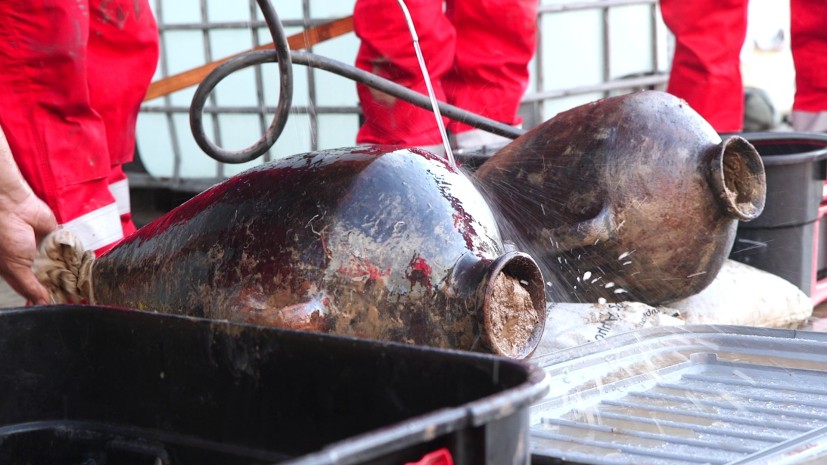Mariners travelled across open water earlier than we thought-that is the conclusion archeologists have drawn from the recovery of two 3,300-year-old amphorae, 90 kilometers off Israel's coast.
The late Bronze Age artifacts were part of a large cluster of jars discovered last summer by a surveying team fielded by Energean, a London-based natural gas production company. The jars were found 1.8 km under the surface.
As per Israeli law, the team was required to report the finding, which they did by contacting the Israel Antiquities Authority (IAA). The company also lent IAA a remotely operated vehicle, which was fitted with specially designed attachments to extract two amphorae over the course of two days.

The jars likely contained agricultural products, such as oil, wine, or fruit, and were the cargo of a ship that may have been sunk by a storm, or pirates. According to Jacob Sharvit, director of maritime archaeology of the IAA, "Whatever happened, it seems to have happened fast. If it sank in a storm and was starting to sink, they would have tried to make it lighter by casting off weight to save it. We saw no sign of that."
Although no remains of the ship are visible, it believed to still be preserved under the sediment. It is estimated to measure between 39 and 46 feet long.
"The ship that has just been discovered changes the understanding of sailing in the ancient world," said Sharvit. Previously, it was thought that Mediterranean sailors of the period remained within eye contact of the shoreline, travelling from port to port. At the distance that the newly discovered ship sank, however, "only the horizon is visible all around." Its sailors would have had extensive knowledge of celestial navigation to reliably travel so far from land.
The two recovered amphorae will be displayed at the new Jay and Jeanie Schottenstein National Campus for the Archaeology of Israel.